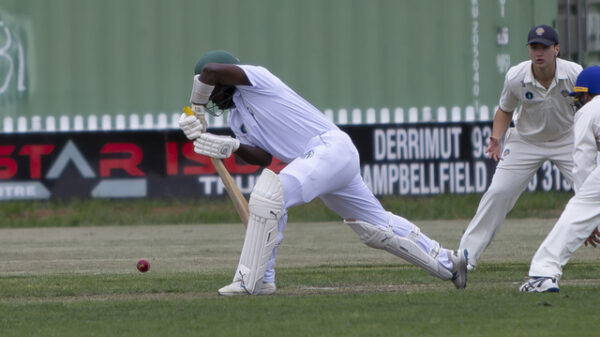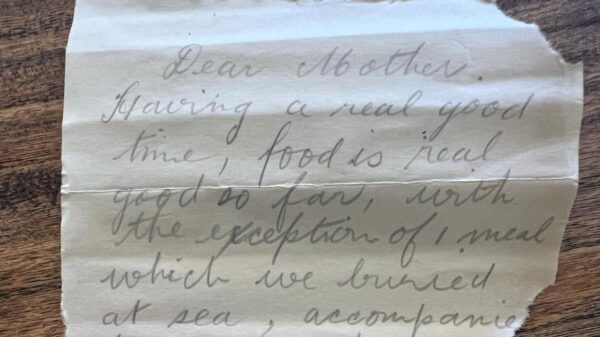A letter penned by a soldier during World War I has been discovered in a bottle on Wharton Beach, located near Esperance, Australia. The note, written by Private Malcolm Alexander Neville on August 15, 1916, provides a rare glimpse into the life of a soldier heading to war. It was found by a local family while cleaning the beach, roughly 750 kilometres southeast of Perth.
Pte Neville’s letter, written shortly before he was killed in action in France in April 1917 at the age of 28, reflects a light-hearted spirit despite the dire circumstances. “Having a real good time,” he wrote, adding that the food was satisfactory, except for one meal they “buried at sea.” The note was enclosed in a glass Schweppes bottle with a cork, and Pte Neville requested that anyone who found the bottle send the letter to his mother in Wilkawatt, South Australia.
Discovery and Historical Significance
Debra Brown and her family found the bottle during a clean-up effort on the beach, likely exposed after severe winter storms eroded the dunes. “We believe it’s been buried because it’s so well preserved,” Brown told AAP. “If it had lived in the ocean for 109 years, it would have sunk to the bottom.” The bottle contained a small amount of water, which Brown drained before attempting to retrieve the letter.
Using surgical tweezers, the family carefully extracted the fragile, two-page letter. Overwhelmed with excitement, Brown searched for Pte Neville on the Australian War Memorial’s website. Given that he did not return home from the war and had no immediate family, Brown found limited information. However, she successfully contacted his great-nephew, Herbie Neville, in Alice Springs to share the news.
A Glimpse into a Soldier’s Life
According to Bryce Abraham, a curator at the Australian War Memorial, Pte Neville was only 157 cm (five feet two inches) tall and faced multiple challenges in his quest to enlist. Initially rejected due to his height and vision problems, he persisted until he was accepted into the Australian Service Corps. Shortly thereafter, he transitioned to an infantry role.
Pte Neville embarked on the troopship HMAT Ballarat on April 1, 1916, and after a six-week voyage, he arrived in the UK in September. He was sent to France in December, joining the 48th Australian Infantry Battalion in February 1917. Tragically, he was killed in action during the first day of the Battle of Bullecourt on April 11, 1917, a catastrophic event that resulted in significant casualties for his battalion.
The bottle also contained a letter from another soldier, Private William Kirk Harley, who survived the war and later married his childhood sweetheart. Brown plans to send Harley’s letter to his granddaughter and will also forward Pte Neville’s letter to his family.
This discovery marks the fourth known instance of similar messages found along Australia’s coastline, where soldiers discarded them during their voyages to Europe in 1916. Abraham notes that soldiers often wrote letters and diaries to alleviate boredom during long sea journeys, fully aware of the grim realities of war. “They understood it wasn’t going to be a great adventure,” he explained.
This remarkable find not only sheds light on Pte Neville’s life but also serves as a poignant reminder of the sacrifices made by countless individuals during the Great War. The discovery has sparked renewed interest in Pte Neville’s legacy, connecting distant family members and honoring the memory of a soldier who sought to contribute to his country despite the odds.


































































